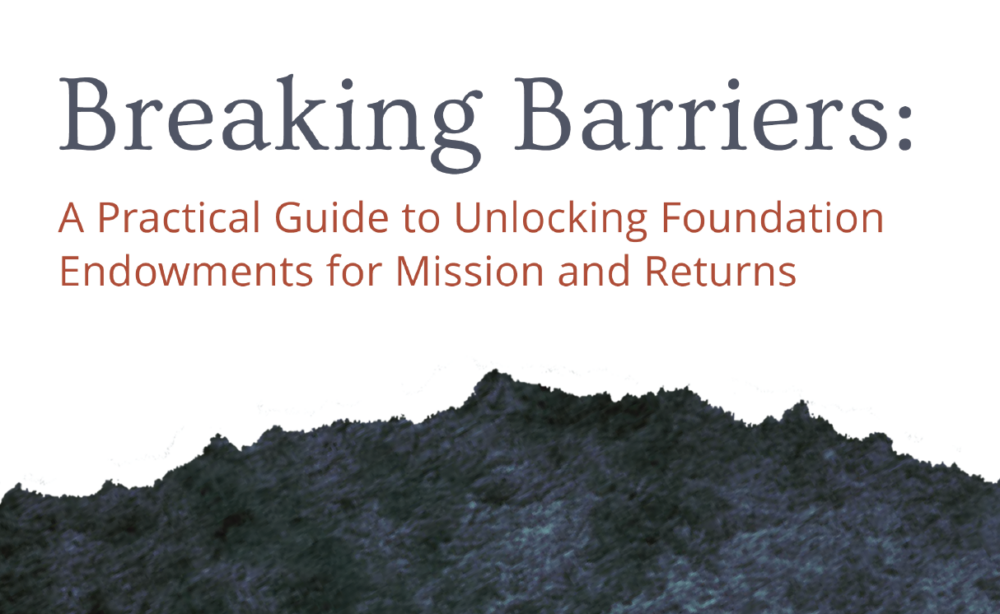

Impact Investments, Impact Investing Advisory Services
Key Takeaway
In July 2023, Simon Mundy profiled Social Finance’s Impact First Fund in the Financial Times.
Over the past couple of decades, a once obscure financial structure has mushroomed into a massive part of the philanthropic landscape. It’s called the donor-advised fund (DAF), and now accounts for 1 in every 7 dollars of US charitable giving, and a fast-growing share in the UK.
When a (typically wealthy) donor transfers money into a DAF, they get to book a tax deduction immediately, as they would when donating to a public charity. But while the money in a DAF legally has to be passed on to charities, this can be done whenever the donor decides — so the money can sit in the fund, under the donor’s effective control, indefinitely.
DAFs have been attacked by critics who say they are tying up money that would otherwise be available to charities (click here for a spirited rebuttal of this argument).
Assets in US DAFs reached $234bn in 2021, up 40 per cent year-on-year; payouts from DAFs to charities (or, in some cases, to other DAFs) rose at a slower pace of 28 per cent, to $46bn.
There’s no immediate prospect of an end to this boom, after a bill to reform DAFs stalled in Congress last year. And the trend is picking up in the UK: contributions to DAFs reached £626mn in 2021, against total charitable giving of £10.7bn.
So, while all that cash sits in DAFs before (eventually, one hopes) being donated to charity, can it at least be put to good use?
That’s the logic behind a new fund-of-funds being set up by Social Finance, an impact finance and advisory non-profit. At the moment, Social Finance’s chief executive Tracy Palandjian told me, the cash in DAFs is commonly invested in money market funds or index trackers. Her organisation’s new Impact First Fund aims to raise money from DAFs — and other investors — and in turn invest this cash with funds committed to positive social and environmental impact.
While a growing number of investors and philanthropists are attracted to the idea of impact investment, Palandjian says, many feel ill-equipped to choose from the large number of impact funds on the market. With its established track record and existing partners including Google, she argues, Social Finance can offer them an effective means of deploying capital in the space.
The fund-of-funds will have its first close this summer, and is aiming to raise $100mn by the end of this year. It’s already drawn up a shortlist of 20 funds for potential investment. One of these focuses on supporting the roll-out of solar power in low-income areas; another invests in work to help communities vulnerable to climate impacts; a third is pursuing investments in sustainable agriculture.
Palandjian says the fund will pursue a “principal plus” strategy, aiming to deliver investors a return that more than keeps pace with inflation. Significantly, she’s not seeking to convince them that this fund will match the financial returns they could make with a conventional investment portfolio.
As impact funds have proliferated in recent years — notably among some of biggest private equity firms — some managers have been promoting a “have your cake and eat it” message, promising serious social impact without any compromise on financial returns. Palandjian argues that, if fund managers want to pursue serious impact, they’ll need to take on “all kinds of risks that will not be compensated financially”.
It’s a pitch that may not appeal to all investors. But if the vast sums in DAFs are to be a permanent feature of the financial landscape, serious thought needs to go into what is done with that money while it sits there.
Learn more about the Social Finance Impact First Fund→
Related Insight

Breaking Barriers: A Practical Guide to Unlocking Foundation Endowments for Missions and Returns
Social Finance partnered with Builders Initiative to conduct market research on the use of mission-related investments (MRIs), barriers to adoption, and promising strategies to unlock endowment assets for greater impact.

The Foundation Review: Donor-Advised Funds and Impact Investing—A Practitioner’s View
"Donor-Advised Funds and Impact Investing: A Practitioner’s View," an essay published in The Foundation Review by FJC CEO Sam Marks, explores the challenges and opportunities of impact investing with DAF capital. The essay takes a…